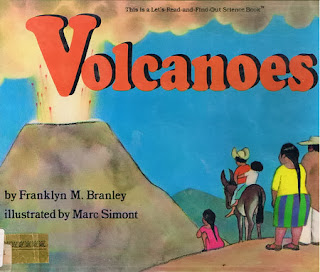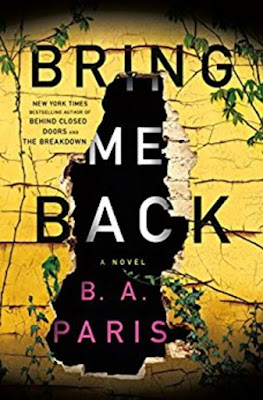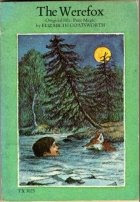Let's Read and Find Out about Science Books
I collect books from this series from the sixties and seventies, mostly for the illustrators. Though I will choose books based on author or topic or sometimes just its vintage appeal. I've always used any of these books in my homeschool though and now I'm clearing off the shelves and deciding which to keep for my personal collection now that the kiddos are teenagers or grown.
396. Volcanoes by Franklyn M. Branley. Illustrated by Marc Simont
Let's-Read-and-Find-Out Science Book
396. Volcanoes by Franklyn M. Branley. Illustrated by Marc Simont
Let's-Read-and-Find-Out Science Book
Rating: (4/5)
Age: (4+)
"Volcanoes are one of nature's great wonders. For years they can stand dormant, but once active they can erupt in tremendous explosions of power. Some eruptions are so big, they change the earth's climate. Luckily, geologists can now approximate when an eruption will occur. What are the causes of an eruption and what are the warning signs? Read and find out!"
Purchased a used copy from my library's sale shelf.
This set of science books has always been one of my favourites when I was homeschooling, and Branley's books were among the best. He was the originator of the series in the first place back in the sixties. This book is not too in-depth; it mostly looks at famous historical volcanoes, going into brief detail about plate tectonics, earthquakes, the Ring of Fire and volcano formation. Marc Simont (most well-known for his illustration of the Nate the Great series)) has drawn adorable illustrations which I think are lovely. This is a nice gentle introduction to volcanoes for the little ones. The book has been updated in 2008 with the same text but more realistic illustrations by Megan Lloyd. I've glanced some samples of it online and it looks nice, but I'm partial to Simont's work myself. I have the original first edition hardcover of this and will be keeping it in my collection.
401. Flash, Crash, Rumble, and Roll by Franklyn M. Branley. Illustrated by Ed Emberley
Let's-Read-and-Find-Out Science Book
Rating: (3/5)
(US) - (Canada) - (UK)
(link to current revised edition)
1964, Thomas Y. Crowell, 32 pgs
(current 1999, HarperCollins)
Age: (4+)
"Did you know that lightning bolts can be over a mile long? Or that they may come from clouds that are ten miles high? Storms can be scary, but not if you know what causes them. Before the next thunderstorm, grab this book by veteran science team Franklyn Branley and True Kelley and learn what causes the flash, crash, rumble, and roll of thunderstorms!"
Purchased a used copy from my library's sale shelf.
My review is of the original 1964 Ed Emberley illustrated edition. The current volume for sale has revised text and new illustrations. In fact, this book has been through a few revisions through the years. The text of this edition is a little out-dated, we don't really use terms like "sonic boom" anymore and frankly the text isn't exactly entertaining either. I usually am quite fond of Branley's contributions to this series but he became a little dry and technical with this one as he does fit a lot of information into this picture book. The text covers all about what thunder and lightning are and how they are made, how to stay safe in a storm and why not to be afraid of storms. What I do like about this book and why I'm keeping this first edition for my collection is Emberley's illustrations. He has used a plethora of techniques: foam stamps, stencils, paint splattering and his drawing style as shown in his "how to draw" books is in fine form here.
398. Giraffes at Home by Ann Cooke. Illustrated by Robert Quackenbush
Let's-Read-and-Find-Out Science Book
This set of science books has always been one of my favourites when I was homeschooling, and Branley's books were among the best. He was the originator of the series in the first place back in the sixties. This book is not too in-depth; it mostly looks at famous historical volcanoes, going into brief detail about plate tectonics, earthquakes, the Ring of Fire and volcano formation. Marc Simont (most well-known for his illustration of the Nate the Great series)) has drawn adorable illustrations which I think are lovely. This is a nice gentle introduction to volcanoes for the little ones. The book has been updated in 2008 with the same text but more realistic illustrations by Megan Lloyd. I've glanced some samples of it online and it looks nice, but I'm partial to Simont's work myself. I have the original first edition hardcover of this and will be keeping it in my collection.
*****
401. Flash, Crash, Rumble, and Roll by Franklyn M. Branley. Illustrated by Ed Emberley
Let's-Read-and-Find-Out Science Book
Rating: (3/5)
(US) - (Canada) - (UK)
(link to current revised edition)
1964, Thomas Y. Crowell, 32 pgs
(current 1999, HarperCollins)
Age: (4+)
"Did you know that lightning bolts can be over a mile long? Or that they may come from clouds that are ten miles high? Storms can be scary, but not if you know what causes them. Before the next thunderstorm, grab this book by veteran science team Franklyn Branley and True Kelley and learn what causes the flash, crash, rumble, and roll of thunderstorms!"
Purchased a used copy from my library's sale shelf.
My review is of the original 1964 Ed Emberley illustrated edition. The current volume for sale has revised text and new illustrations. In fact, this book has been through a few revisions through the years. The text of this edition is a little out-dated, we don't really use terms like "sonic boom" anymore and frankly the text isn't exactly entertaining either. I usually am quite fond of Branley's contributions to this series but he became a little dry and technical with this one as he does fit a lot of information into this picture book. The text covers all about what thunder and lightning are and how they are made, how to stay safe in a storm and why not to be afraid of storms. What I do like about this book and why I'm keeping this first edition for my collection is Emberley's illustrations. He has used a plethora of techniques: foam stamps, stencils, paint splattering and his drawing style as shown in his "how to draw" books is in fine form here.
*****
398. Giraffes at Home by Ann Cooke. Illustrated by Robert Quackenbush
Let's-Read-and-Find-Out Science Book
Rating: (3/5)
(US) - Out of Print
1972, Thomas Y. Crowell, 32 pgs
Age: (4+)
"Describes the physical characteristics, habits, and natural environment of giraffes."
Purchased a used copy from my library's sale shelf.
This is a simple picture book about giraffes on the grasslands. We learn where they live, what they eat, their digestive system, prey, how their long necks work and the neck's role in mating. Along with the birth of a baby giraffe we watch how one is taken care of until it is ready to go out on its own. Illustrated by the prolific Quackenbush, his style is realistic and attractive. As was popular at this time the book alternates b/w spreads with 3-colour spreads (using green, blue and orange for the palette). Provides a basic introduction to the topic. While not one of the best books in the series, Quackenbush is a fine illustrator and I love the colours. Keeping for my collection.
Rating: (2/5)
(US) - (Canada) - (UK)
(link to current revised edition)
1963, Thomas Y. Crowell, 32 pgs
(current 1999, HarperCollins)
Age: (4+)
"While watching winter’s snows blanket the Earth, what child hasn’t wondered, ‘What will the rabbits do? Or the birds?’ This wonderfully simple Let’s-Read-and-Find-Out Science book explains the many ways animals have of coping with harsh weather. Helen K. Davie’s elegant illustrations perfectly evoke the season."
Purchased a used copy from a thrift shop.
*****
Let's-Read-and-Find-Out Book
Rating: (4/5)
(US) - (Canada) - (UK)
1987, HarperTrophy, 32 pgs
Age: (4+)
"Did you ever wonder where an ant goes when it disappears into an anthill? Underneath the hill there may be miles of tunnels and hundreds of rooms. Read to find out how to make your own ant farm!"
Purchased a used copy from a thrift shop.
The text in this early reader picture book is delightful. Brief and yet full of information and just about anything one could think to ask about basic facts of ants and then some. Children will become fascinated and want their own ant farm as described on the last page. I'd like to try another ant farm myself now! I just don't like the illustrations; Dorros draws wish-washy scenes and the faces on his kids make them all appear to be grimacing; however, he does have an incredible talent for drawing the intricate mazes of the insides of an ant hill. There are many of such drawings and they are fascinating to look at. Worth the buy. However this is too modern for my collection and is off to the thrift store.
Rating: (4/5)
(US) - (Canada) - (UK)
1987, HarperTrophy, 32 pgs
Age: (4+)
"Did you ever wonder where an ant goes when it disappears into an anthill? Underneath the hill there may be miles of tunnels and hundreds of rooms. Read to find out how to make your own ant farm!"
Purchased a used copy from a thrift shop.
The text in this early reader picture book is delightful. Brief and yet full of information and just about anything one could think to ask about basic facts of ants and then some. Children will become fascinated and want their own ant farm as described on the last page. I'd like to try another ant farm myself now! I just don't like the illustrations; Dorros draws wish-washy scenes and the faces on his kids make them all appear to be grimacing; however, he does have an incredible talent for drawing the intricate mazes of the insides of an ant hill. There are many of such drawings and they are fascinating to look at. Worth the buy. However this is too modern for my collection and is off to the thrift store.
*****
411. Animals in Winter by Henrietta Bancroft and Richard G. Van Gelder. Illustrated by Gasetano di Palma
Rating: (2/5)
(US) - (Canada) - (UK)
(link to current revised edition)
1963, Thomas Y. Crowell, 32 pgs
(current 1999, HarperCollins)
Age: (4+)
"While watching winter’s snows blanket the Earth, what child hasn’t wondered, ‘What will the rabbits do? Or the birds?’ This wonderfully simple Let’s-Read-and-Find-Out Science book explains the many ways animals have of coping with harsh weather. Helen K. Davie’s elegant illustrations perfectly evoke the season."
Purchased a used copy from a thrift shop.
This review is for the original 1963 edition. The version currently available for sale has a completely revised text and new illustrations by a different artist. I haven't seen the new edition but honestly can see why this was changed as it doesn't do anything for me. The text is quite boring, simply telling what different forest animals do in the winter. Each page moving onto another animal. The illustration is quite ugly done in two colours brown and black. The animals are sketched in pencil/ink and are very detailed and life-like but then the backgrounds done probably in charcoal or chalk are very scribbly and plain; the cover illustration is not representative at all! So when all is said in done the only thing I liked was the animal sketches so I won't be keeping this one for my collection. There is that rare occassion when an update can't do worse than the original.







Comments
Post a Comment